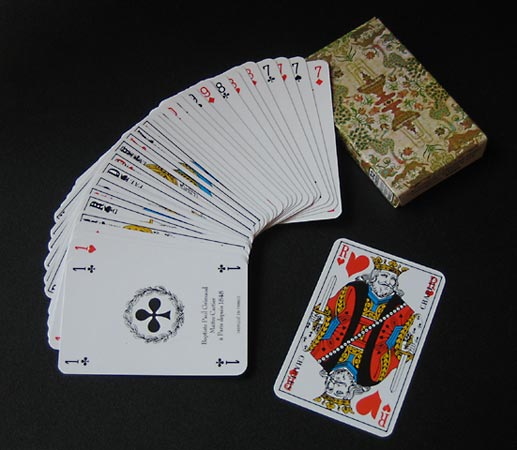While flower arrangement for many people in the West consists of symmetrically arranging flowering plants in a vase,Japanese Ikebana (literally 'flowers kept alive') is a lot more complex. There are many schools, ofwhich the most popular are Ikenobo, Sogetsu and Ohara. There are alsodifferent styles depending on the school and the plants and vase used.
- How To Say Poker In Japanese Google Translate
- How To Say Poker In Japanese Translator
- How To Say Poker In Japanese Language
Japanese Language Stack Exchange is a question and answer site for students, teachers, and linguists wanting to discuss the finer points of the Japanese language. It only takes a minute to sign up. Sign up to join this community. The 5 Whys is a technique used in the Analyze phase of the Six Sigma DMAIC methodology. The 5 Whys is a great Six Sigma tool that doesn't involve a statistical hypothesis and in many cases can be completed without a data collection plan. Place the blinds (starting bets) or 'ante up.' In poker, bets are placed at the beginning of the game in one of 2 ways. In Texas Hold’em, the player next to the dealer typically places a small blind bet that’s half of the usual minimum bet, while the player to that person’s left places a big blind that’s at least the minimum bet. If the player of the 5-5-5-5 now begins with (say) a pair of 6's, this can be beaten by 4-4 or 3-3 (the highest pair), but not by 8-8. The reversed order stays in effect until the end of the hand, unless another 4 of a kind is played, in which case there is a counter-revolution and the original order is restored. Nearly 500 Japanese girls' names. Did you know that Haruko means 'spring child' and Harumi means 'spring beauty'?
Ikenobo is the oldest school of ikebana, founded by Buddhist priest Ikenobo Senkei in the 15th century.He is thought to have created the rikka (standing flowers) style. This style was developed as a Buddhistexpression of the beauty of nature, with seven branches representing hills, waterfalls, valleys and so on arranged in aformalised way.

The present 45th-generation head of the school is Ikenobo Sen'ei. The school is based in the Rokkakudo temple in Kyoto,believed to have been started by Prince Shotoku. Among the priests and aristocrats,this style became more and more formalised until, in the late 17th century, the growing merchant class developed a simplerstyle, called seika or shoka.
Shoka uses only three main branches, known as ten (heaven), chi (earth) and jin(man) and is designed to show the beauty of the plant itself. Another old form of ikebana is nageire, usedin the tea ceremony.

The first of the modern schools was formed when Ohara Unshin broke from the Ikenobo school in the late 19thcentury. The Ohara school generally uses moribana (piled-up flowers) in a shallow, flat container. The schoolwas started at a time when Western culture was heavily influential in Japan and the moribana style made good use of Westernplants. But it was still a formal style. Influence from the artistic movements of the early 20th century led to the developmentof jiyuka (free-style) arrangement. Despite all the changes, ikebana was still only for the upper class.
In the 1930's, and then more so in the postwar period, interest in ikebana became much more widespread. Ikebana schools openedwhich attracted people of all social classes. During the occupation, many wives of US servicemen took up the art and later helpedit spread abroad. Led by Teshigahara Sofu, founder in 1927 of the Sogetsu school, zen-eibana oravant-garde ikebana introduced all kinds of new materials, such as plastic, plaster and steel.
Today, there are about 3,000 ikebana schools in Japan and thousands more around the world. The Ikenobo school alone has some60,000 teachers worldwide. Ikebana is practised by about 15 million people in Japan, mostly young women. However, many westernpeople misunderstand the concept of Ikebana. I remember my 9-year old boy coming home with plants as part of hisbiology homework and arranging them on a desk in the Ikebana-like way – ofcourse, it wasn't really ikebana. But many Western florists make the same mistake, trying to arrange their plants withoutgetting the gist of Japanese culture itself.
Ikebana can be roughly divided into two styles - the moribana shallow vase style and the nageire tall vase style. The Sogetsuschool uses a series of kakei (patterns) for each style so that even the beginner can quickly create theirown arrangements. As an example, let's look at the moribana Basic Upright style.
Kakeizu for the arrangement shown on the left
(copyright Sogetsukai Foundation). The photo shows the frontal view as in the illustration.
How To Say Poker In Japanese Google Translate
The shushi are the three main branches - the shin (truth) branch, the soe(supporting) branch and the hikae (moderating) branch. The arrangement of these branches and thekenzan or spiked metal holder are drawn in a simple diagram, called a kakeizu. The kakeizushows a frontal and overhead view of the arrangement.

How To Say Poker In Japanese Translator
After examining the kakeizu, suitable branches or flowers are chosen for the shushi and trimmed if necessary. The stems are cutto correct lengths according to set formulae. The kenzan is placed in the vase and just covered with water. The sushi are fixedto the kenzan in order and according to the kakeizu. Jushi or short supplementary stems are added to supportthe shushi and give depth to the arrangement. Finally, the composition is examined and any finishing touches applied.
How To Say Poker In Japanese Language
Related content: